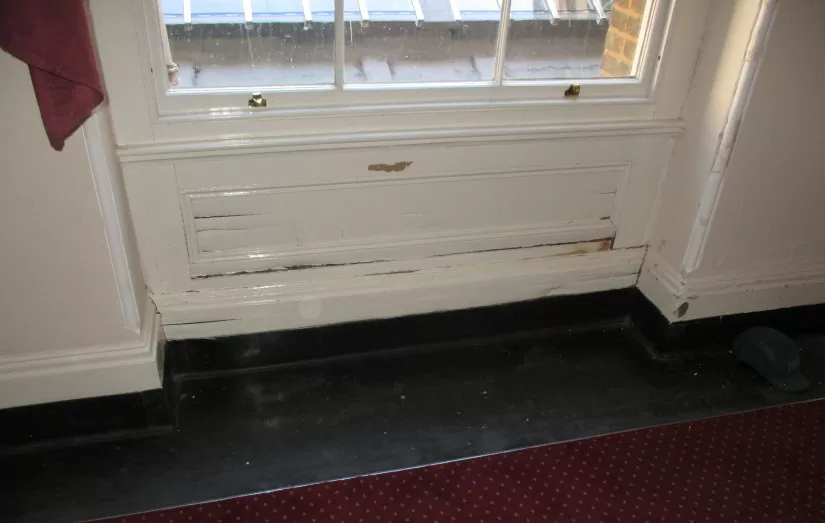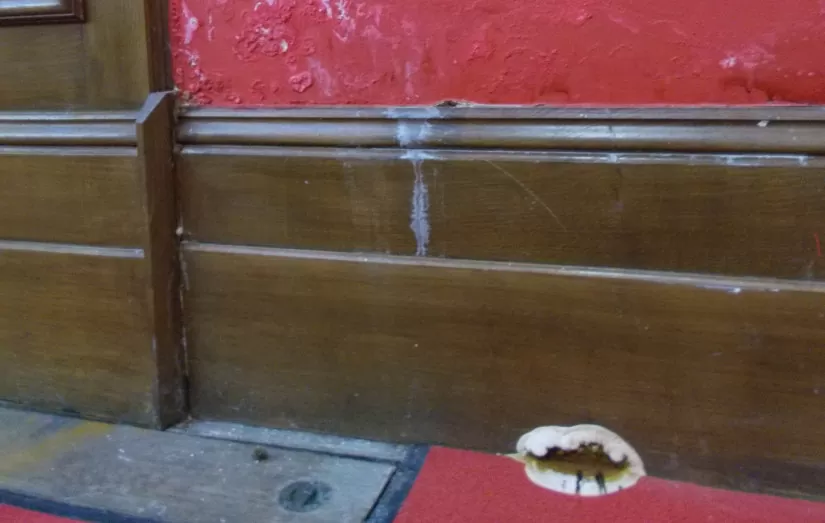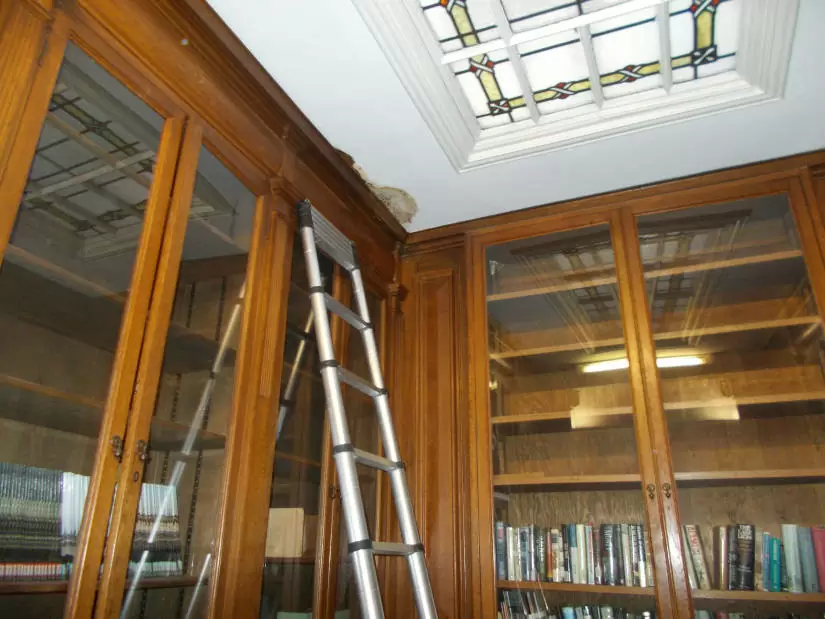Dry Rot Infection and Decay to a Building in Sandhurst, Surrey
The Problem
H+R were instructed to undertake an investigation to determine the extent and cause of dry rot (Serpula lacrymans) infection and decay which had been recently discovered affecting the structures at the south-west corner of the central courtyard; so that advice could be given on cost effective remedial measures, to allow the conservation of historically important fabric, and to refurbish with the minimum risk of further dry rot, or other damp or decay related problems on future occupancy as office and library accommodation.
Dry rot (Serpula lacrymans) is a ‘geophilic fungus’ that lives in damp masonry and consumes softwood timber built in contact with masonry. The fungus will persist for many years, decades or even centuries under these conditions, and will recur when further water penetration occurs due to defective building maintenance; despite any chemical remedial timber treatments. Dry rot produces fruiting bodies or ‘sporophores’ when it is stressed by drying. The presence of visible fruiting bodies in the building were therefore an indication of recent improvements in maintenance preventing, conditions for further decay. The fruiting bodies alerted the building manager to the long-standing problem which pre-dated refurbishment from about two years ago.
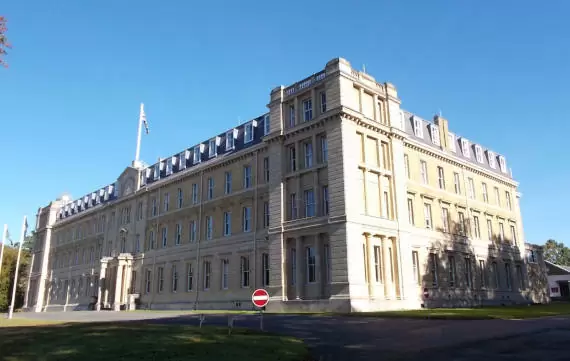
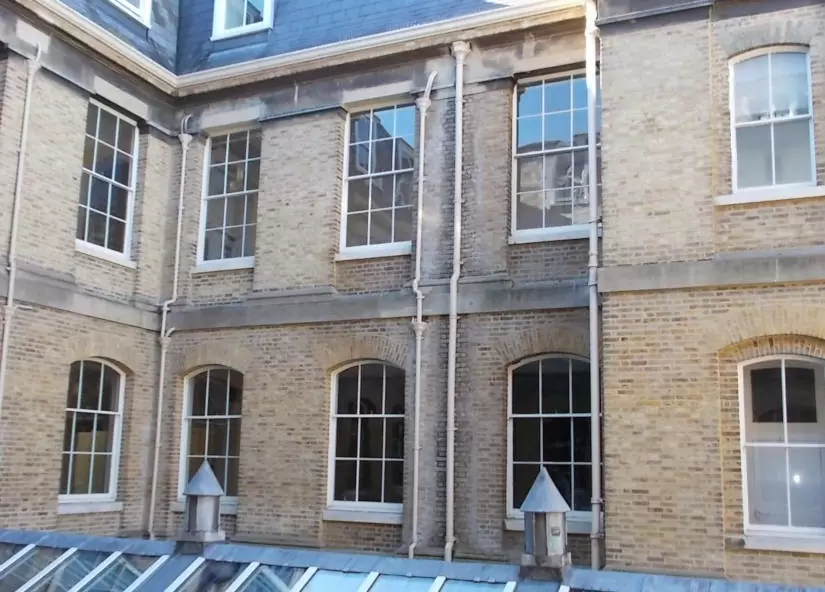
The Solution
Using non-destructive techniques, H+R investigated the extent and cause of the dry rot infection and decay. The gutters and downpipes were investigated as blocked or faulty drainage is commonly a causing factor of dry rot infection and decay. We deployed a Rothound, dry rot search dog, to do a general sweep of the building to ensure that the dry rot infection and decay had not affected any structures other than those in the south-west corner of the courtyard. Timbers were examined further by minimally invasive high-powered fibre-optic borescope.
We provided remedial specifications for the repair of decayed structures. The specifications recommended isolation of timber elements from damp or potentially damp and dry rot infected brickwork with a damp-proof material, using a detail approved by H+R. These remedial works prevented the unnecessary use of invasive chemical treatments allowing the retention of the historic fabric whilst eliminating the risk of further decay. The remedial strategy devised by H+R identified other potential defects and latent defects from the previous refurbishment and gave recommendations for cost effective risk management measures for the facilities managers and future refurbishment.
Case Study Gallery

